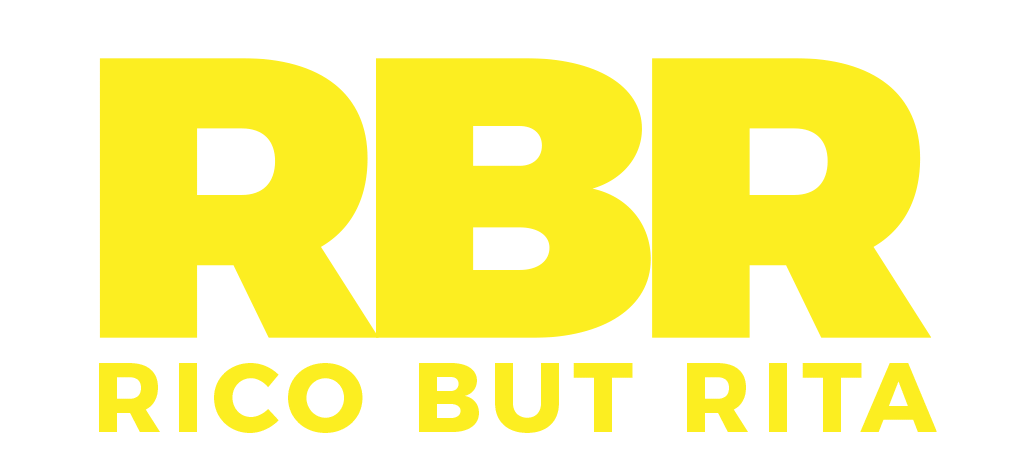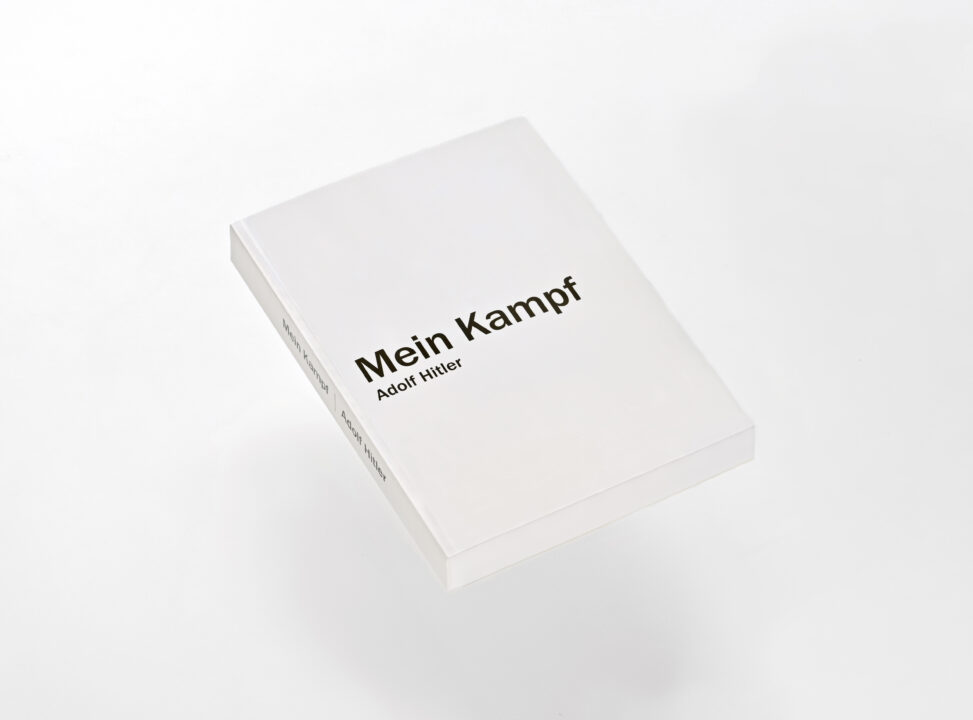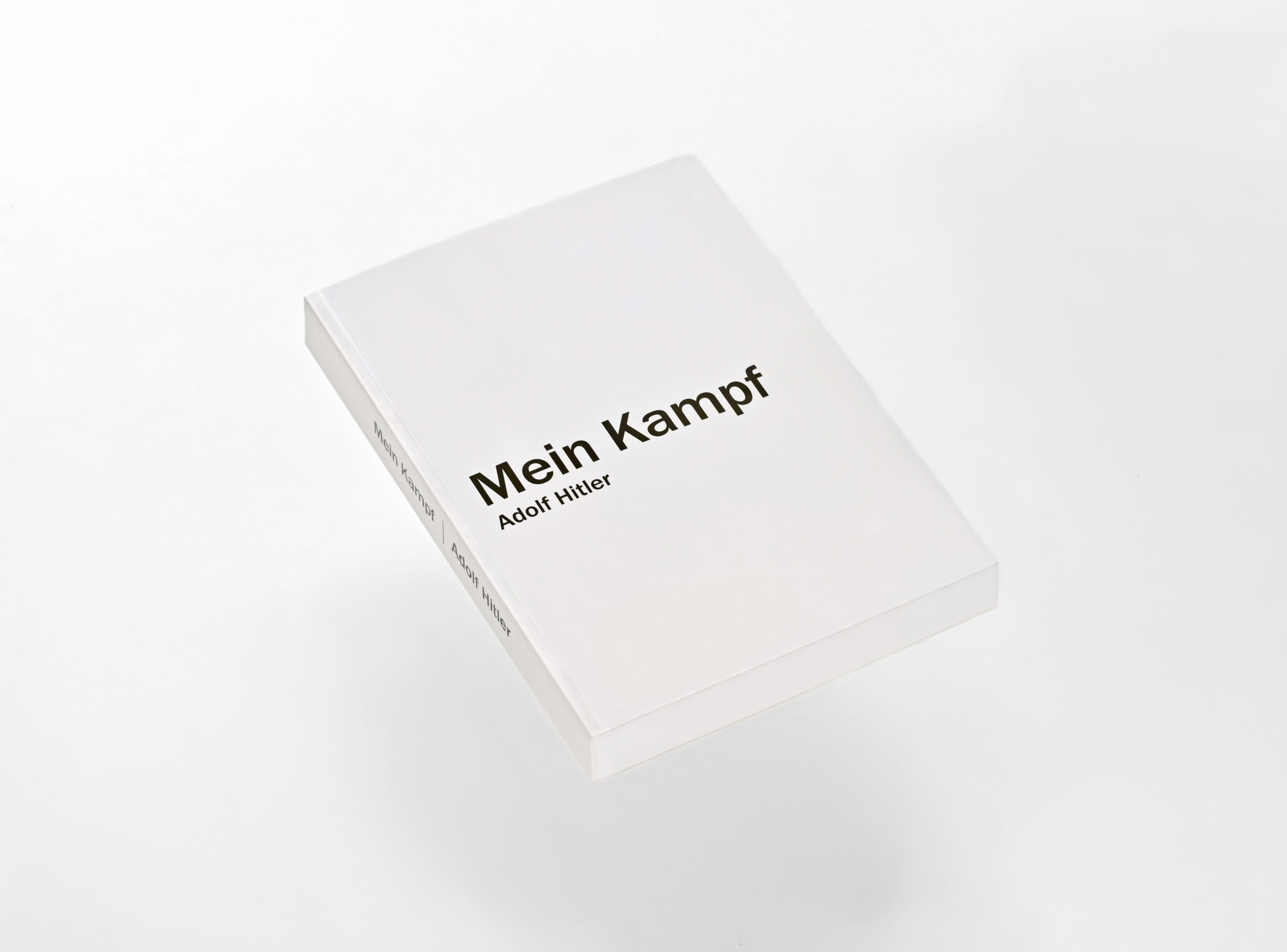
HOPE found in NOPE.
This work is an experiment in the codification of the greatest hate discourse of the 20th century into 21st century hope.
The motif is Adolf Hitler’s book “Mein Kampf”.
Nazism was an ideology that was accepted by many people at the time, but in the end, it failed to make anyone happy and became one of the worst disasters in history. We cannot change the past, but we can face it, learn from our mistakes, and right our wrongs.
The book is filled with claims of racism, anti-democracy, leadership principles, totalitarianism, and gender inequality. I extracted the sentences and tried to re-contextualize them into a liberal-democratic cosmopolitan poem about egalitarianism, respect for the individual, living together with diverse people, and changing the future through individual action, without changing a single word of the sentence.
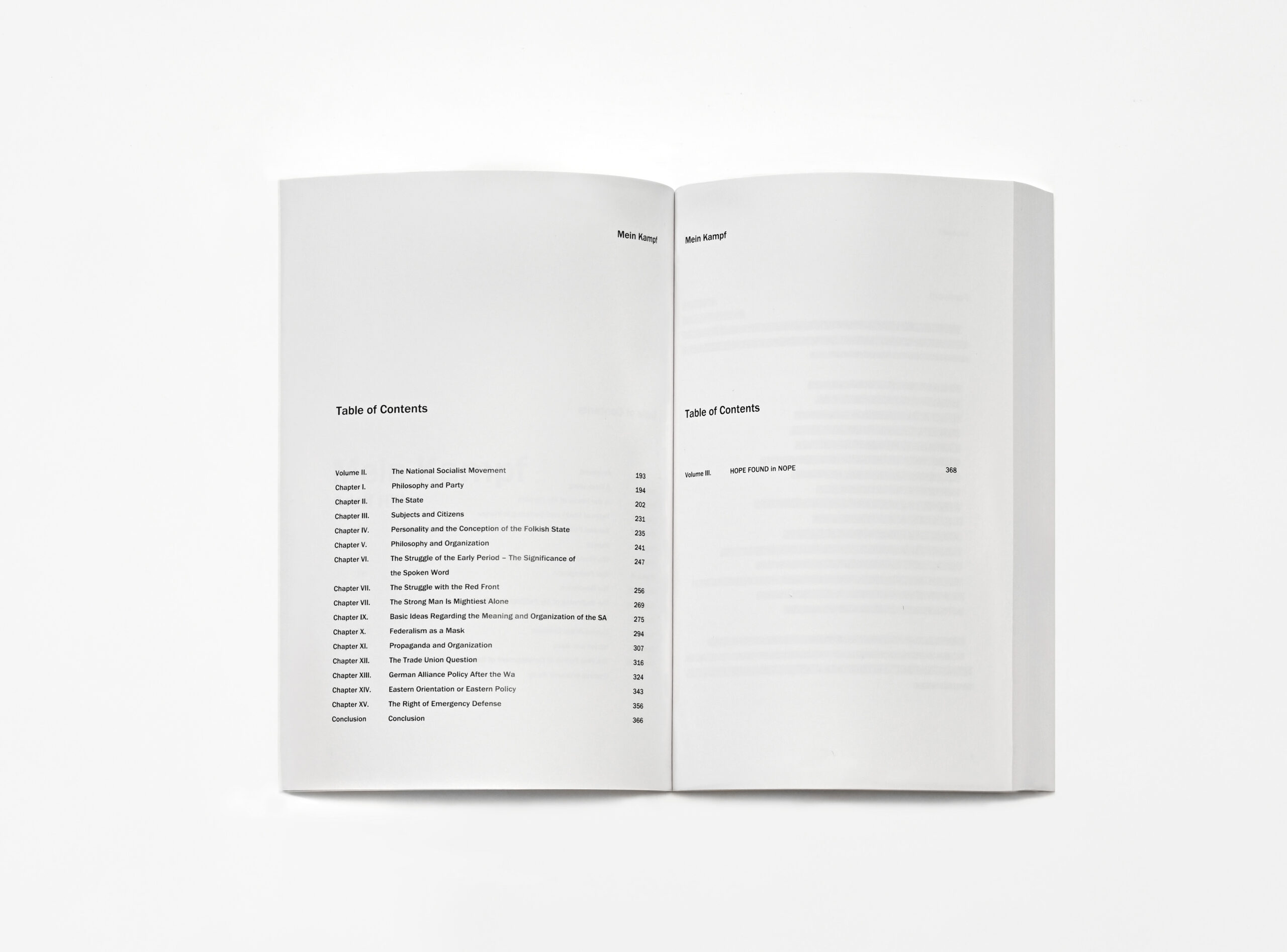
Medium:
Printed book (bound, 320 pages)
Composed of:
1. chapters 1 and 2 – The entire text of “Mein Kampf” (1939 English translation) is included, except that all non-extractable passages are blacked out, leaving only the physical “weight” of the original text. However, all non-extractable text is blacked out, leaving only the physical “weight” of the original text.
2. Chapter 3 “HOPE found in NOPE” – a new chapter created by rearranging the 83 lines rescued from the blacked-out text. Inserted as a “chapter for the future” that does not exist in the original.
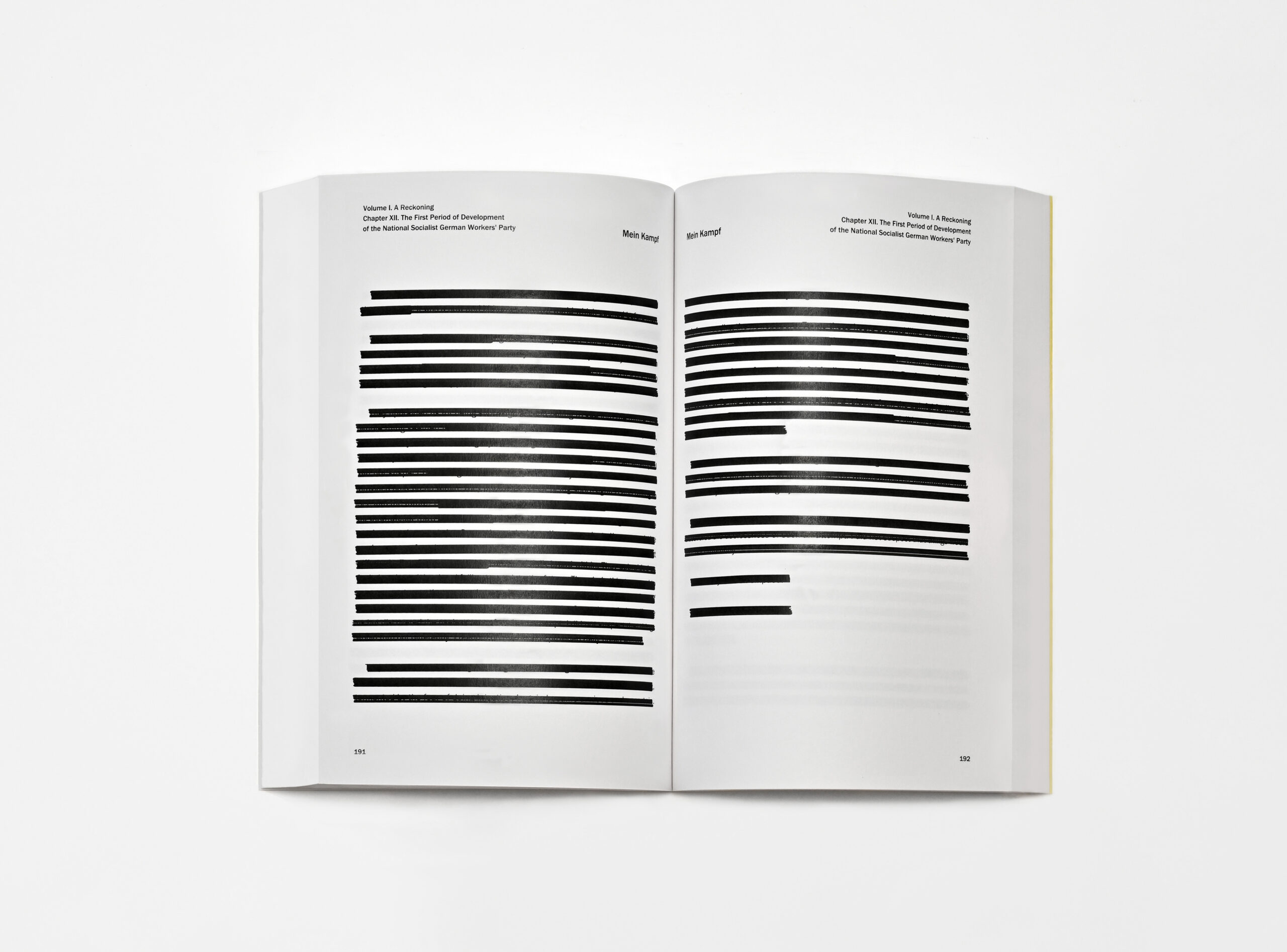
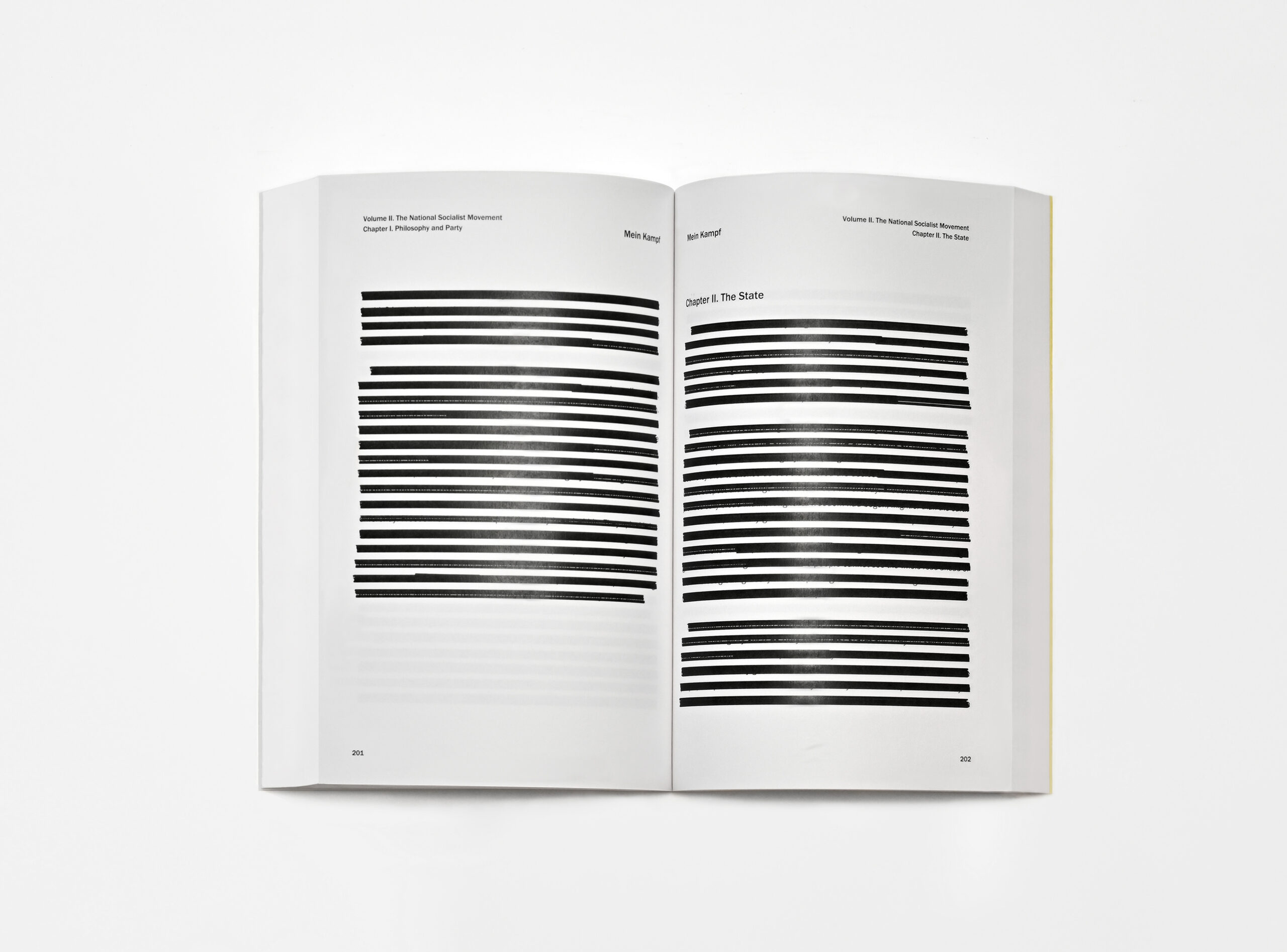
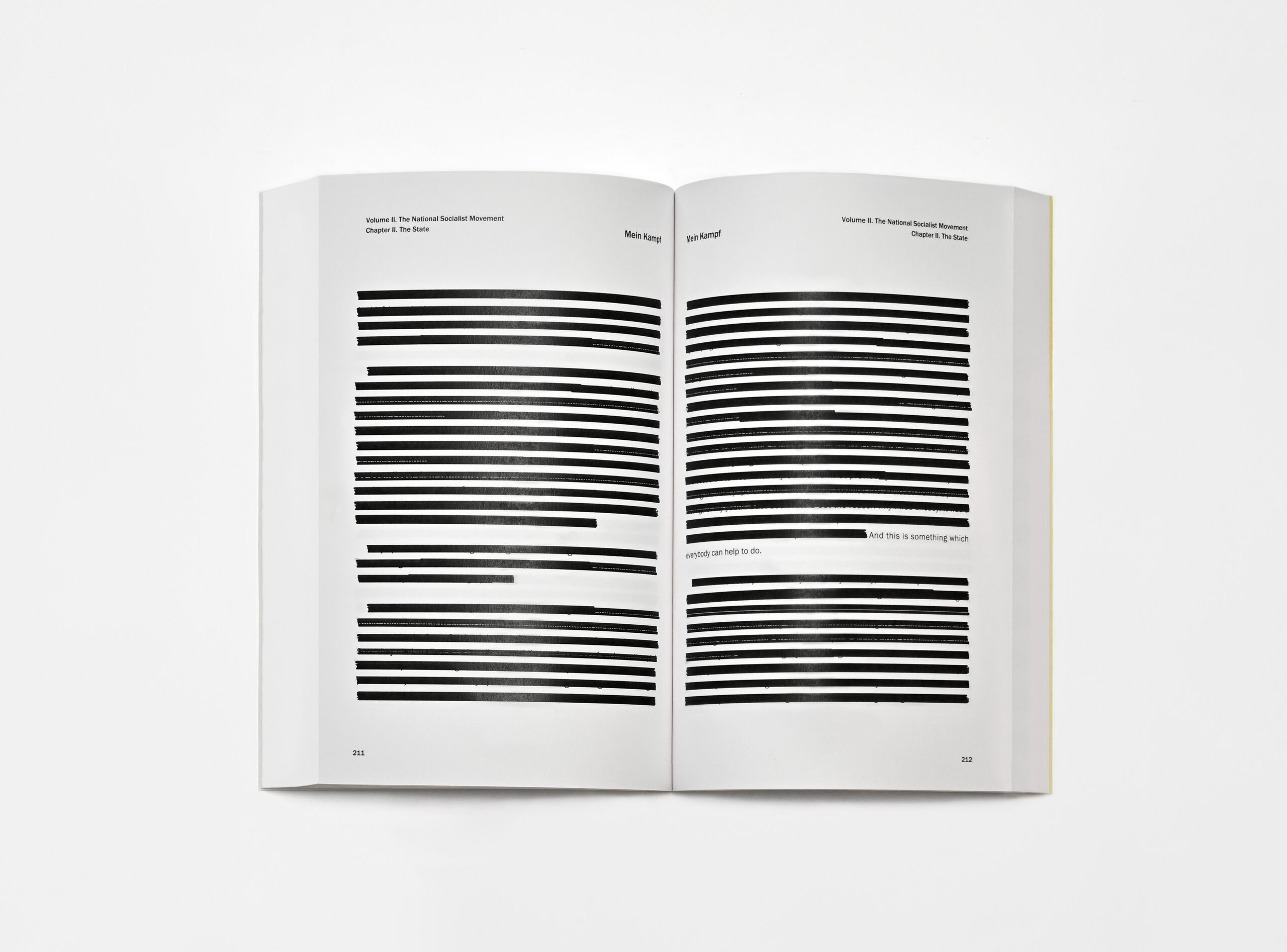
Description of the work:
– A two-layered structure of “erasure” and “rebirth”
The blacking out of over 300 pages immobilizes hate discourse as visual noise, banishing it to the point of unreadability. The physical act of turning the pages is also a ritual to measure the volume of violent language.
Chapter 3, by contrast, functions as a “language regenerator” that transforms ‘hatred’ into “hope” on the same page with the same type.
– Super-Expansion of Blackout Poetry
The technique, which is usually limited to “excerpts,” has been expanded to full-text presentation and all-over blacking out. The third methodology, which is neither quotation = reenactment nor denial, is presented.
– Participation that turns the reader into an “editor.”
Only the black rectangles and the new chapters are visible. The viewer is forced to supplement the “missing parts” hidden between the pages with his/her imagination, and is transformed into an active editor facing the historical blanks.
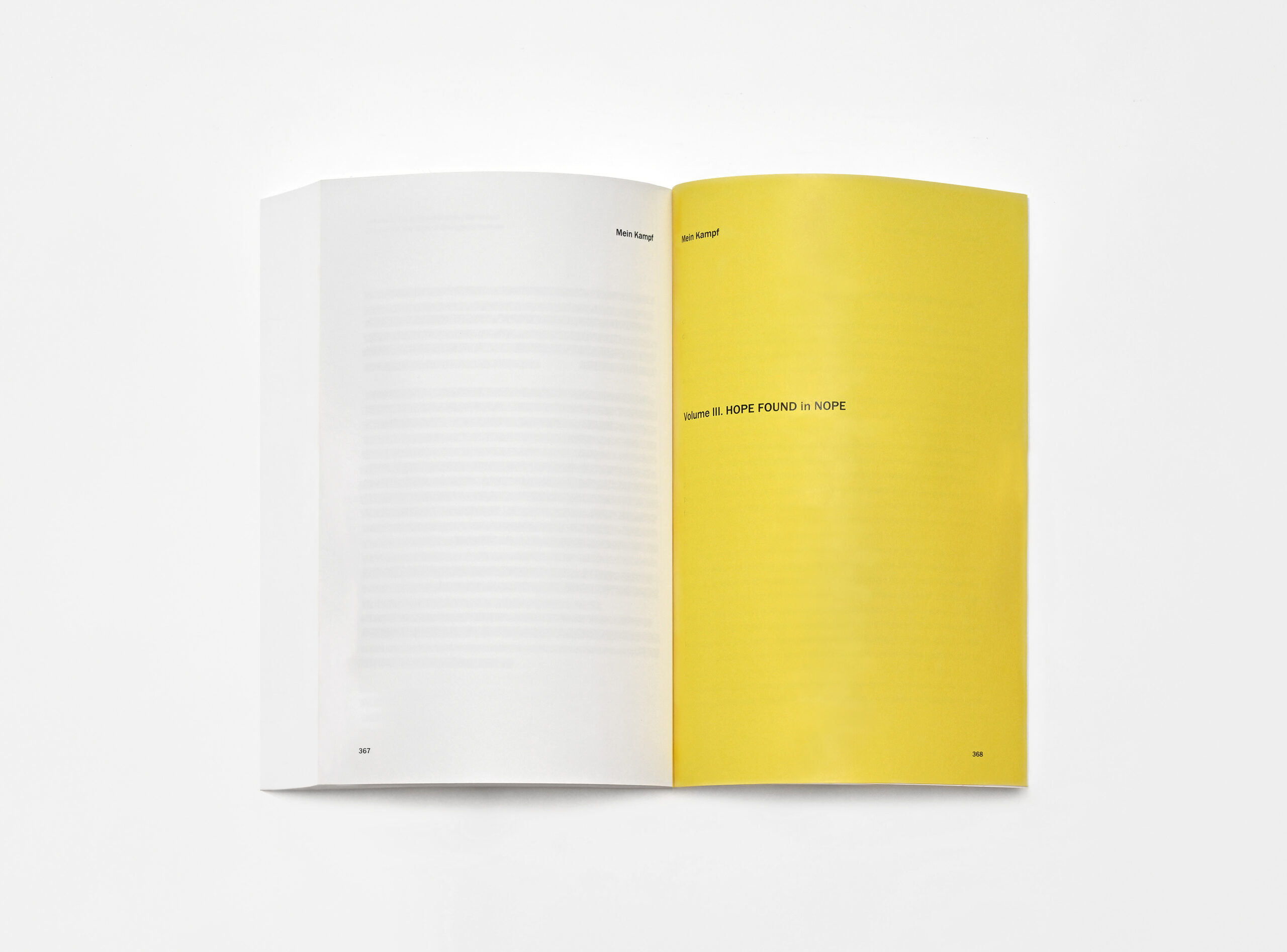
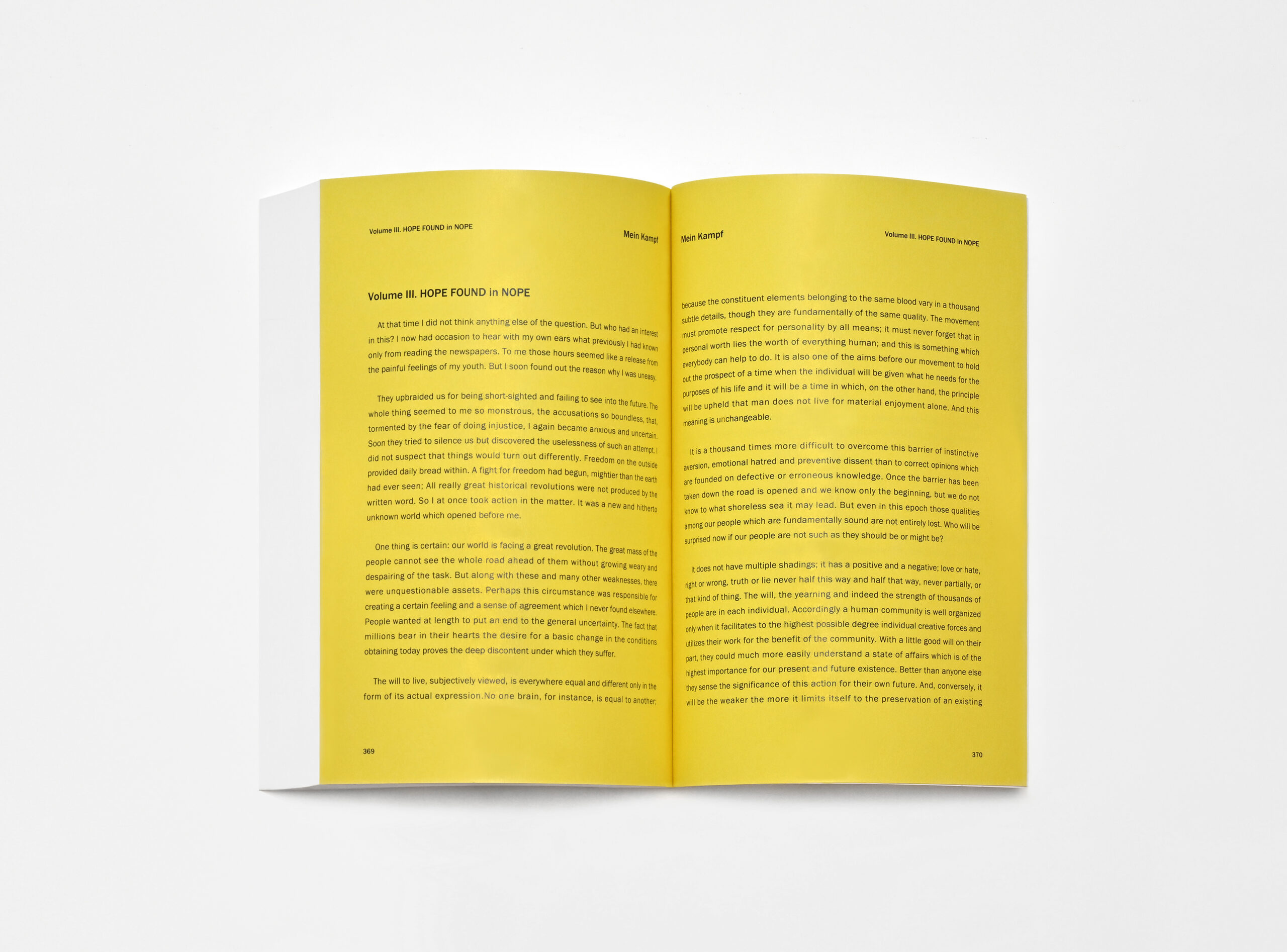
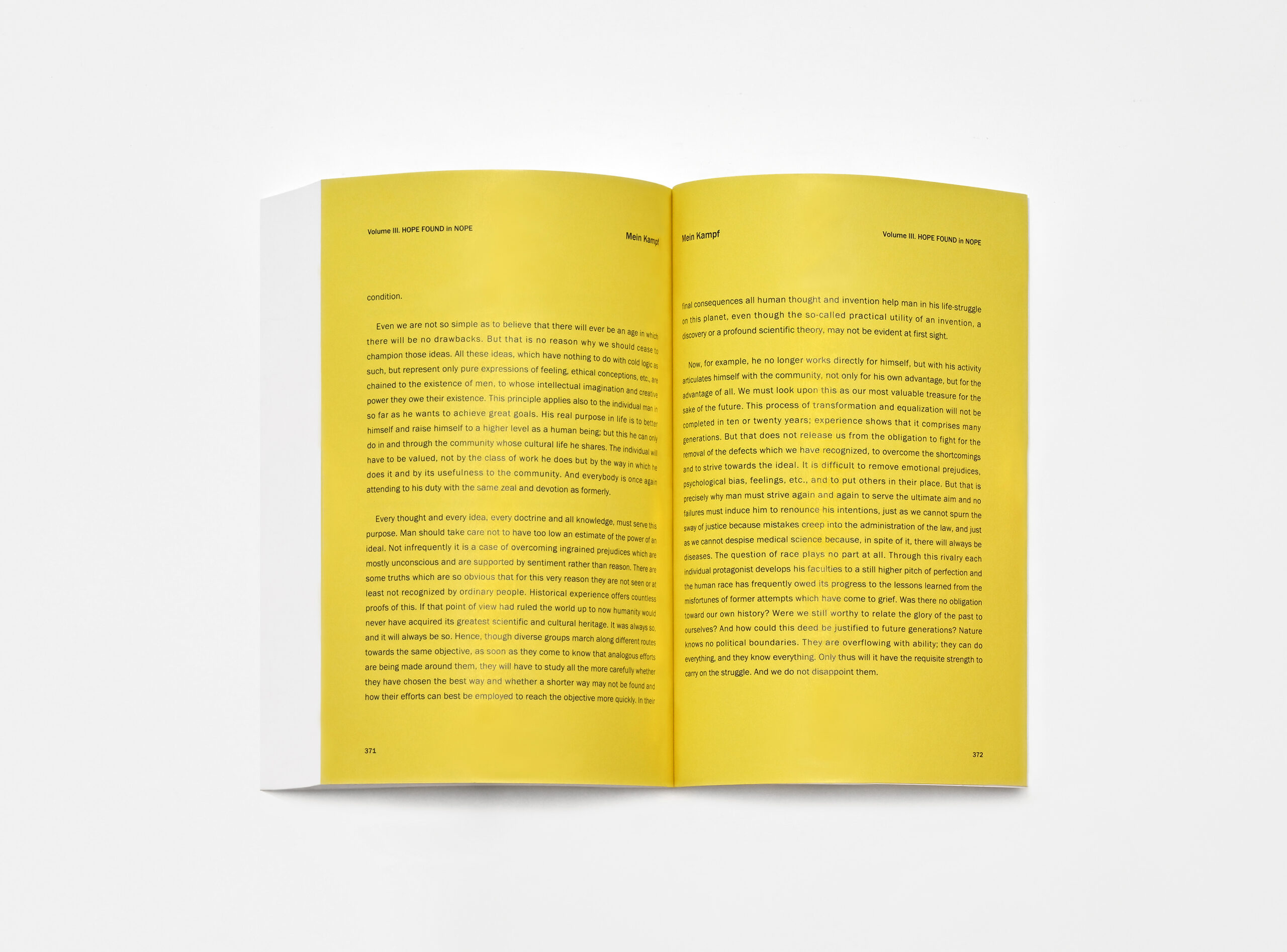
This work explores a method of “remediation” rather than “remixing” the linguistic violence of the past by regarding the text itself as ‘material’ and cohabiting the three stages of “erasure, repression, and rebirth” within a single book. The act of turning the page itself is a form of hatred. The very act of turning the pages becomes a physical and ethical process of moving from hatred to hope, quietly entrusting the viewer with the responsibility of “rereading history.
